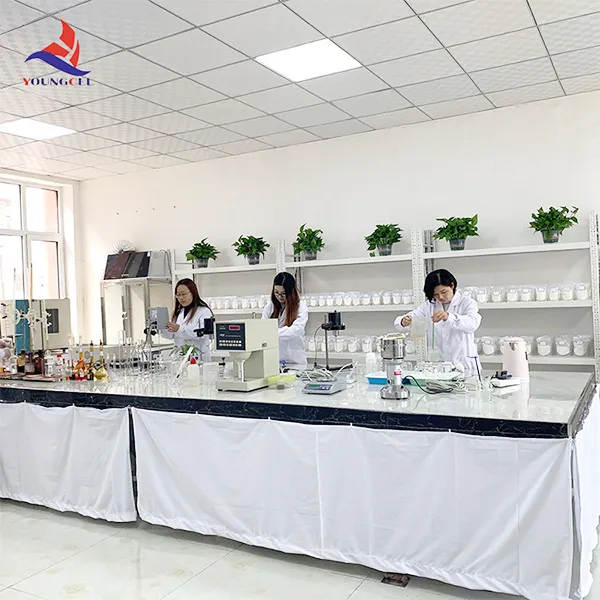HPMC Cellulose An Overview of Its Characteristics and Applications
Hydroxypropyl methylcellulose (HPMC) is a non-ionic cellulose ether renowned for its versatility and wide-ranging applications. It is derived from cellulose, which is the primary component of plant cell walls. HPMC is synthesized by the chemical modification of cellulose through the substitution of hydroxypropyl and methyl groups, resulting in a compound that possesses unique properties. This article explores the characteristics, manufacturing process, and the diverse applications of HPMC.
Characteristics of HPMC
One of the most notable features of HPMC is its ability to dissolve in water, forming a stable and viscous solution. This solubility facilitates its use as a thickening agent in various formulations. HPMC also exhibits excellent film-forming abilities, which are beneficial in many applications, particularly in the pharmaceutical and cosmetic industries.
Another key characteristic of HPMC is its thermal stability. Unlike some other cellulose derivatives, HPMC does not gel upon exposure to heat, making it suitable for processes requiring elevated temperatures. Its pH stability is also significant, as HPMC maintains its properties across a wide range of pH levels. Additionally, HPMC is non-toxic and biocompatible, making it a popular choice in food and pharmaceutical formulations.
Manufacturing Process
The production of HPMC involves several steps, beginning with the sourcing of natural cellulose from wood or cotton. The cellulose is then subjected to a series of chemical treatments to introduce hydroxypropyl and methyl groups. The degree of substitution of these groups can be modified to produce HPMC with varying properties tailored to specific applications. The resultant product is then dried, milled, and packaged for distribution. The careful control of manufacturing parameters is crucial to ensure consistency in quality and performance.
Applications of HPMC
hpmc cellulose

HPMC finds extensive use across various industries due to its multifunctional properties.
1. Pharmaceutical Industry HPMC is widely used as a binder and coating agent in tablet formulations. Its ability to form a gel when wet makes it ideal for controlled-release dosage forms, allowing drugs to be released over an extended period. Additionally, it serves as a matrix-forming agent in hydrophilic gels for transdermal drug delivery.
2. Cosmetic Industry In cosmetics, HPMC acts as a thickening agent and emulsifier. It helps stabilize emulsions and enhances the texture of creams and lotions. Moreover, its film-forming properties contribute to the smooth application of makeup products.
3. Food Industry HPMC is utilized as a food additive, primarily as a thickener and stabilizer in sauces, dressings, and bakery products. Its ability to retain moisture also contributes to the shelf-life and quality of baked goods.
4. Construction Industry In construction, HPMC is used in mortars and tile adhesives, where it improves workability and water retention. Its inclusion enhances the adhesion properties of the mixtures, making them more effective.
5. Personal Care Products HPMC is also utilized in personal care items such as shampoos and conditioners, where it helps maintain viscosity and enhances product application.
Conclusion
HPMC cellulose is a remarkable material that offers extensive versatility across multiple applications. Its unique properties—such as solubility, thermal stability, and non-toxicity—make it an invaluable ingredient in pharmaceuticals, cosmetics, food, construction, and personal care products. As industries continue to innovate and require materials that can meet high-performance standards, HPMC will undoubtedly play a crucial role in the development of new products and technologies. With ongoing research and development, the potential applications of HPMC are likely to expand even further, solidifying its status as an essential compound in modern manufacturing.
-
The Application and Significance of Construction RdpNewsMay.19,2025
-
Industrial Grade HpmcNewsMay.19,2025
-
Building Coating Adhesive Building Coating Adhesive HpmcNewsMay.19,2025
-
Application Of Hpmc For Detergent For Detergent In DetergentsNewsMay.19,2025
-
Application Of Hpmc Cellulose In Cement-Based MaterialsNewsMay.19,2025
-
Application Of High Quality Hpmc For Construction In The Field Of ConstructionNewsMay.19,2025




